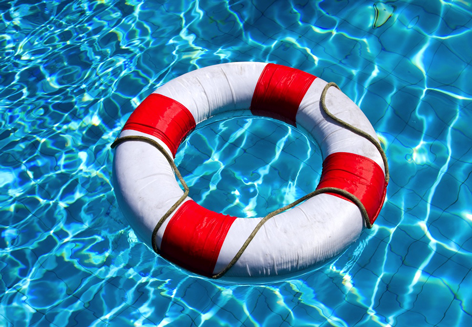Every year around 52 people drown in Switzerland alone, around five of them children between the ages of 0 and 9. In addition, around 25 children suffer severe, permanent brain damage after a drowning accident. Drowning is the second most common accidental death in children under the age of 5!
Unfortunately, media articles often add attention-grabbing reports to misrepresentation and misunderstandings. I would like to clarify that in the following.
Did you know that
It happens that an adult watches a drowning child and has no idea what is happening?
a child sinks to the bottom in water and can drown in 20 seconds?
a child loses consciousness after 2 minutes at the latest and that brain damage occurs after about three minutes due to lack of oxygen?
most drowning children were “only briefly” left out of sight of the caregiver?
90% of accidents caused by drowning children occur within 10 meters of the supervisor, but when children are temporarily unattended?
Most fatal swimming accidents happen in private swimming pools and biotopes?
Babies and toddlers under 3 years of age are the most likely to drown in the bathtub at home?
Children under the age of three can drown in very shallow water only 5cm deep? Think of the bird bath in the garden, paddling pool or a small bucket with water lilies.
Children under 5 years of age are most at risk?
Autistic children have an increased risk of drowning in water because they like to “wander around”?
Youngsters drowning because they overestimate their own limits and underestimate the dangers and risks?
Teen drowning accidents are often associated with drugs and alcohol and in natural water?
Are ponds, rivers and streams the most dangerous places? Half of all children who have drowning accidents there die.
But most importantly:
DROWNING IN SMALL CHILDREN IS QUIET!
No hectic emergence, no gasping for air, no cry for help, no wild rowing and splashing of arms.
Therefore, NEVER LEAVE YOUR CHILD UNATTENDED IN OR NEAR WATER! Drowning in young children can be prevented!
In the popular media, prevention is unfortunately rarely placed in the foreground, but almost exclusively two special emergencies (although both are very rare and only account for 1 to 2% of all drowning accidents). I mean that
- secondary drowning and that
- dry drowning
In secondary drowning, the lungs have a delayed reaction. Liquids that get into the lungs cause inflammatory reactions and oedema there. A person suffocates from lack of oxygen.
To be clear, secondary drowning does not happen to a child who is perfectly fine after falling into the water. It happens to those who drowned and had serious signs and needed to be resuscitated. And EVERY drowning victim rescued needs professional medical attention.
Signs of “secondary drowning” that should prompt a quick medical visit are: A child (or adult) starts coughing again after hours or days, complains of chest pain, vomiting, has difficulty breathing, or appears apathetic.
Dry drowning is a shock reaction of the body. Because of their disproportionately large head, children easily lose their grip. If the head falls into the water, the glottis closes in the throat and makes breathing impossible. The lock is like a spasm that won’t go away on its own. The child can suffocate – even in the smallest puddle!
Checklist Prevention Tips
- NEVER leave a toddler unattended – neither in the bathtub, in the paddling pool nor in any other body of water.
- If you have to leave your child, make sure that another adult is responsible for your child and that this person understands their responsibility. The same applies if you are in a group of adults: one person has to be responsible and control the child (s) CONSTANTLY!
- The lifeguard in the swimming pool is not responsible for your child. That’s your job! So …PUT DOWN YOUR MOBILE PHONE! Cell phone distraction is just dangerous when around the water with young children.
- Buoyancy aids are NOT a substitute for supervision, they are no guarantee against drowning.
- Register your child as early as possible for water habituation and swimming lessons. In this way, they get to know the dangers of water and understand how to behave when dealing with water. And it learns that it can keep afloat with movement.
Parent-baby swimming lessons are safe. Personally, I am not a fan of diving the children underwater, which some swimming instructors encourage or even ask parents to do. I’ve never done that with my own children, and I believe that with a lot of babies it’s an unreasonable one. - Always cover and / or fence your swimming pool and paddling pool when it is not in use. The same goes for a garden pond.
- When playing near open water, children should always wear a life jacket.
- Teach your teen never to jump into unfamiliar water. And also not be allowed to encourage his friends to do so. Educate your teen about the risk of drowning AND the risk of spinal injuries. Show you the Paraplegic Foundation website so that he can see the link.
Even if it is important to get children used to water at an early age, most children do not learn to swim properly until they are around five years old.
Even if your child can already swim, pale vigilant. Especially in cold water, swell or strong currents, children quickly reach their limits. Only from the age of about 10 and with a lot of practice is a child relatively safe in swimming and assessing dangers.
Posted on June 12, 2021 by Luitgard Holzleg
This entry was posted in Blog. Bookmark the permalink.

